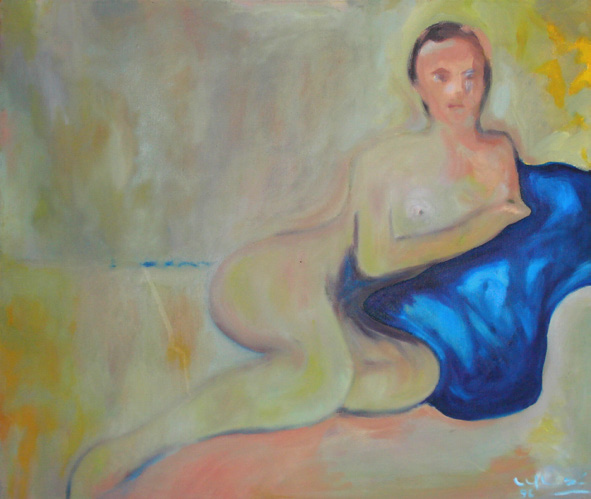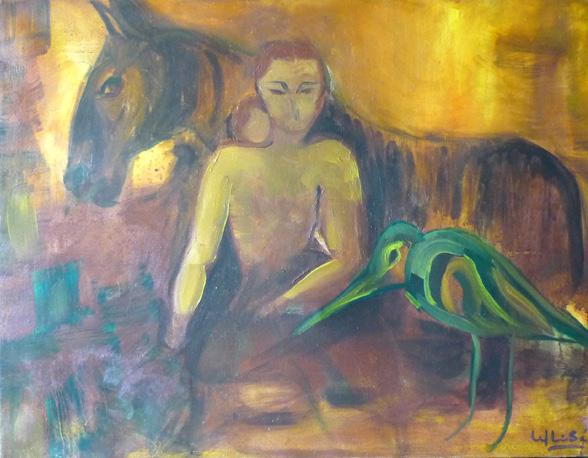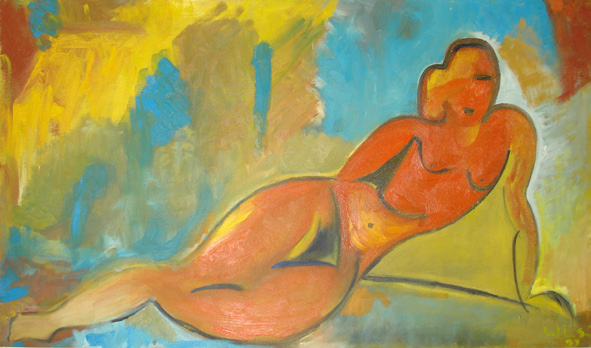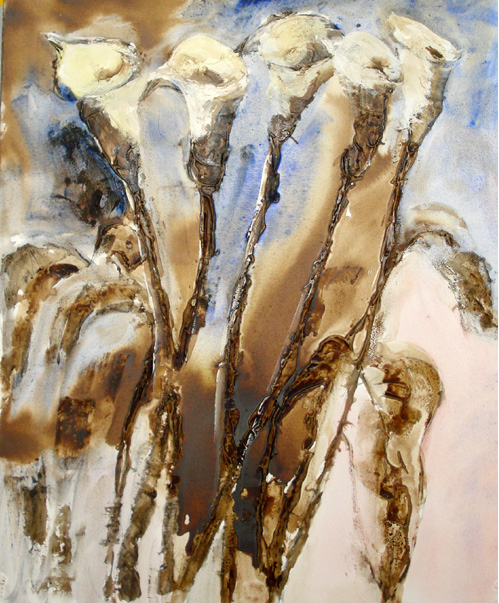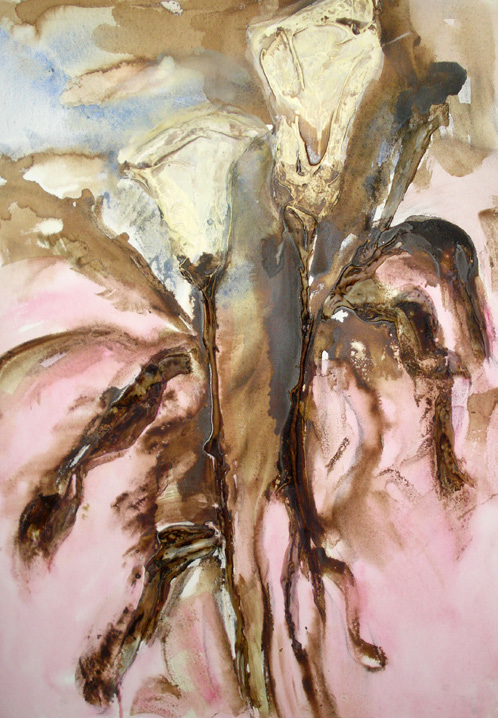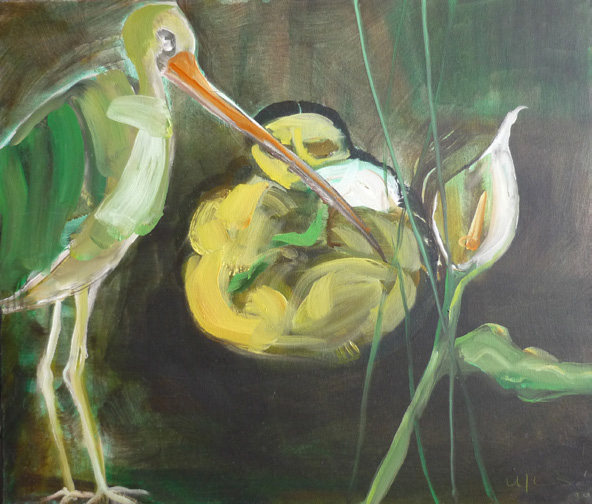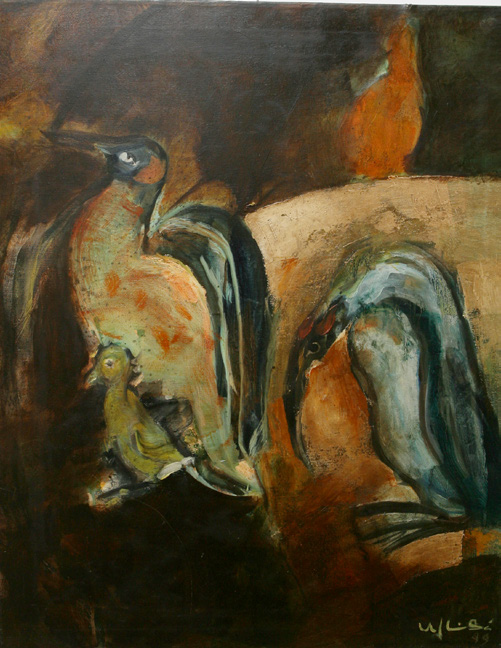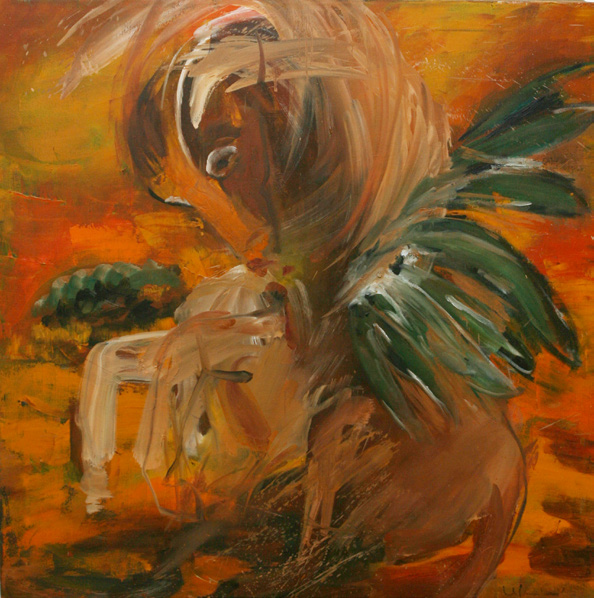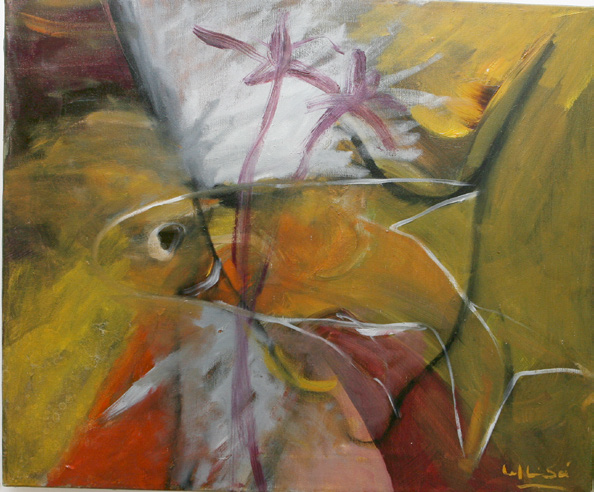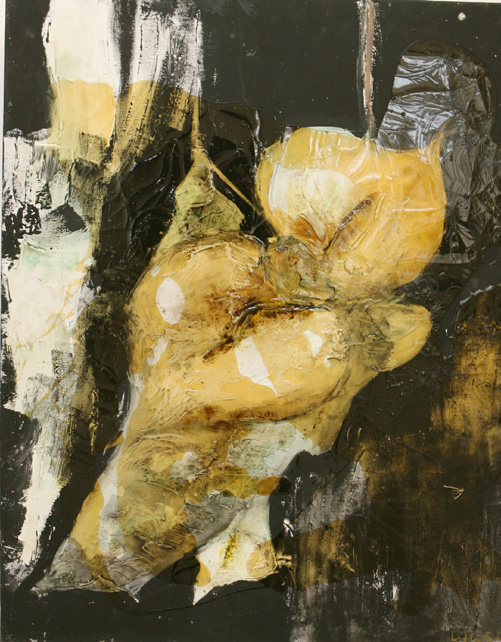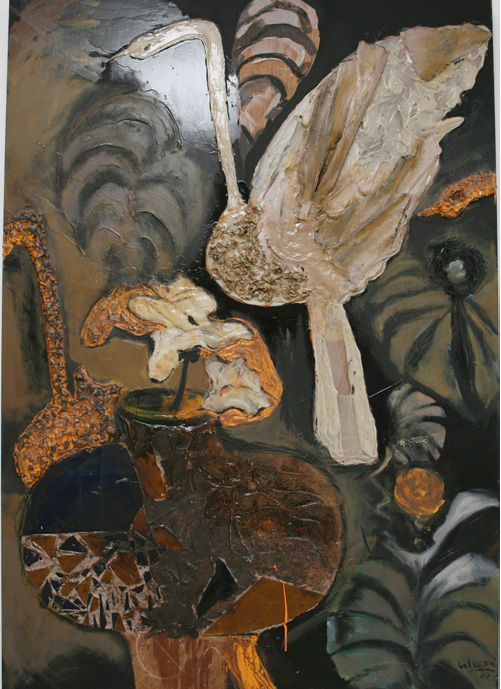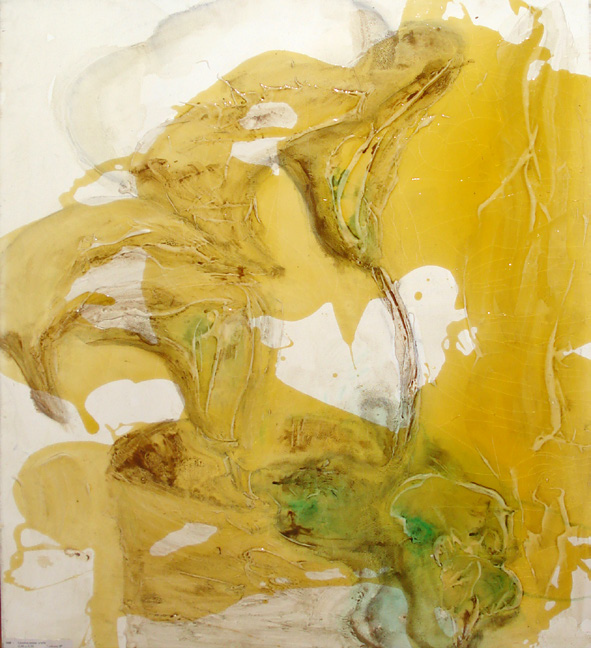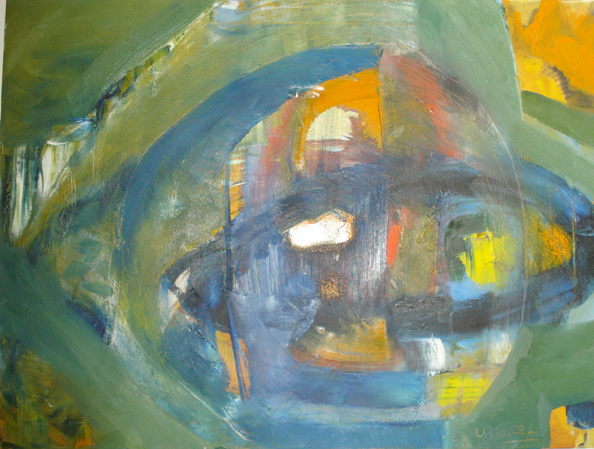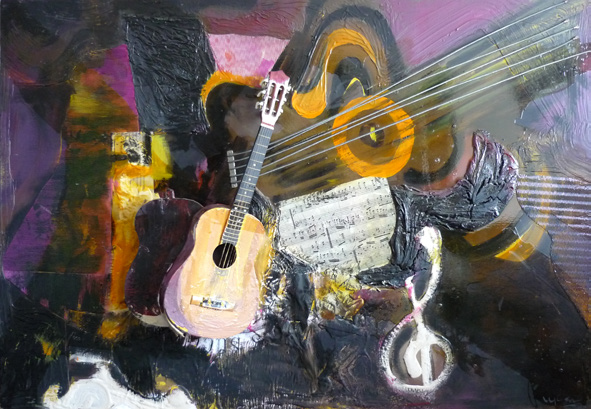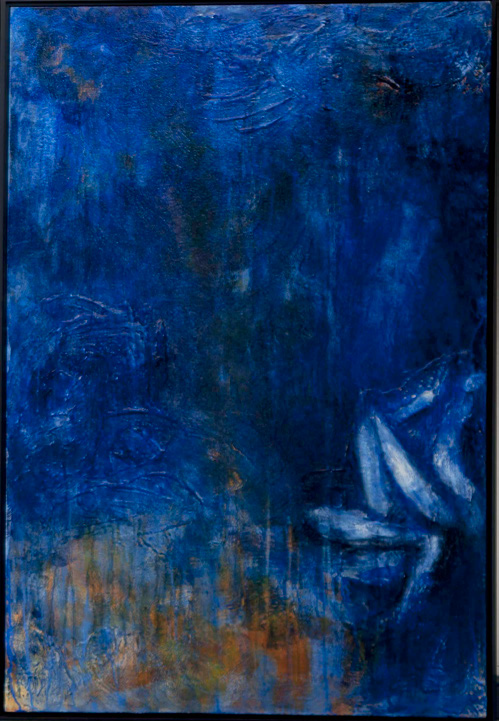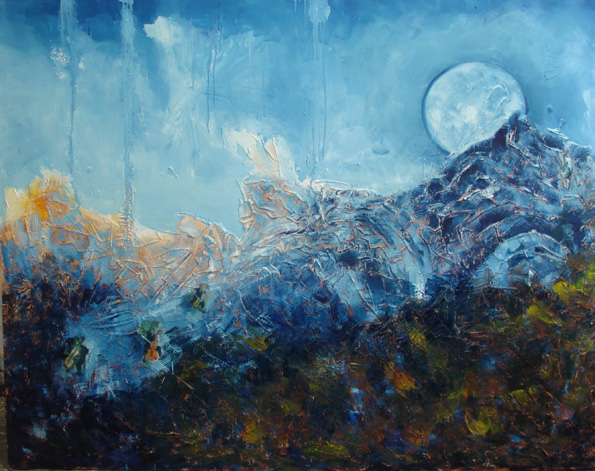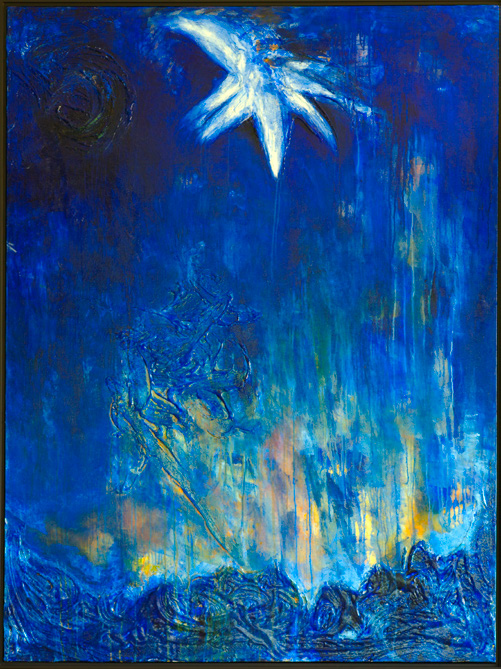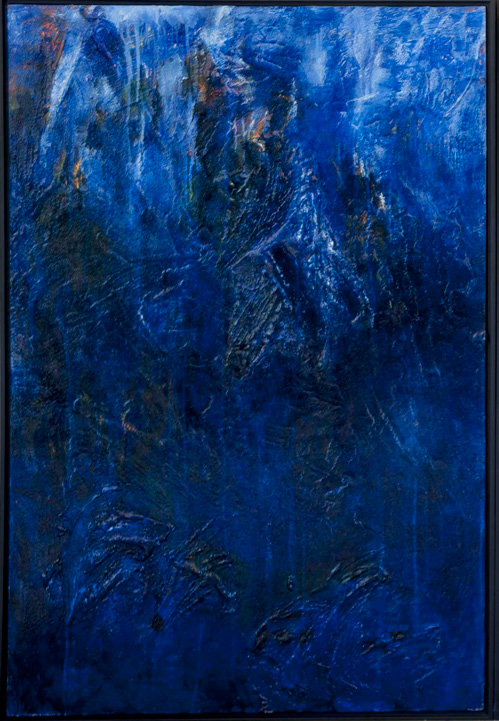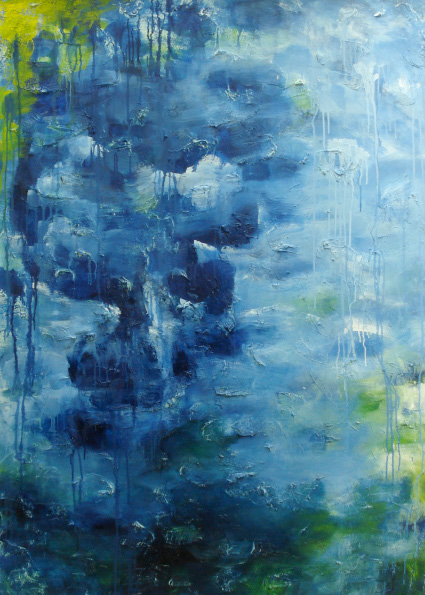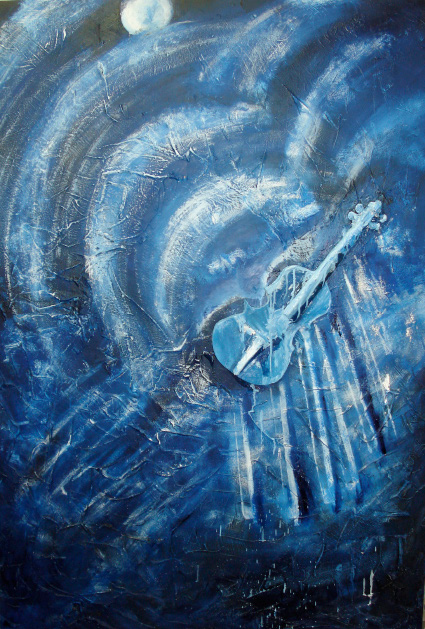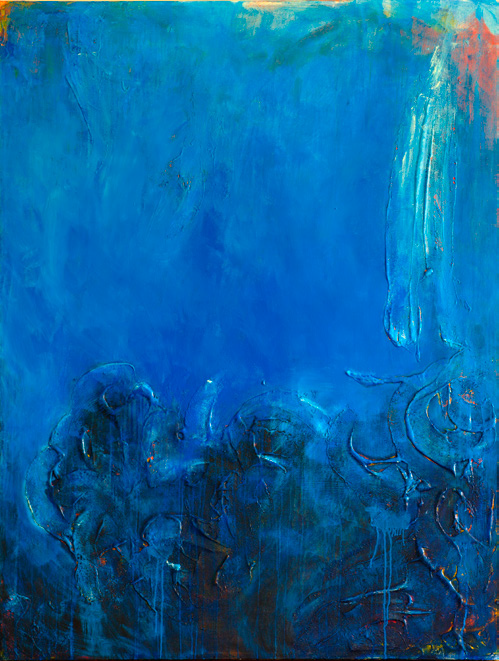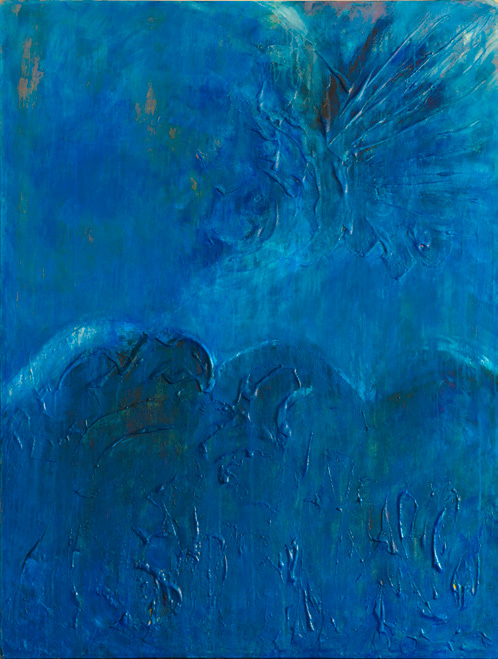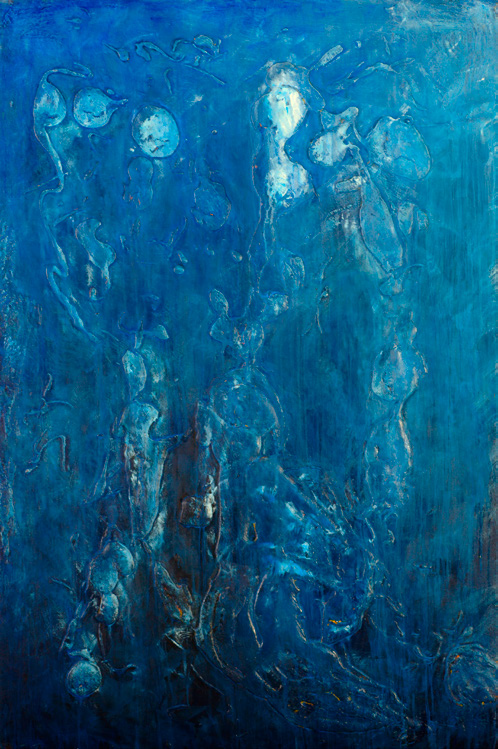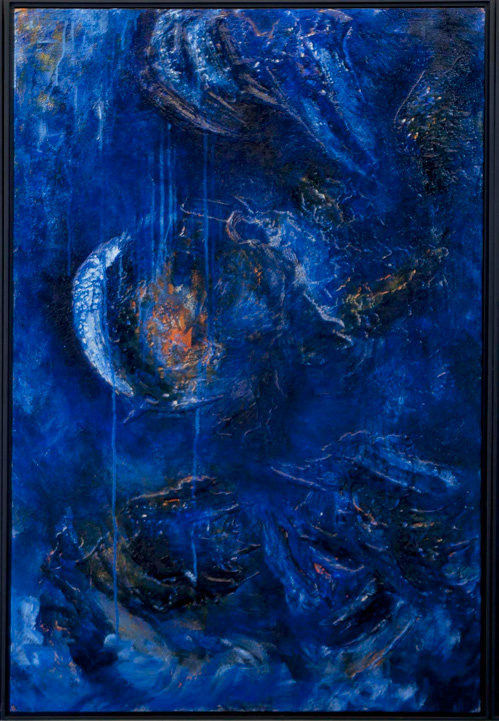GLÓRIA SÁ CULTURAL SPACE
The founder of the CNJ, Glória Sá, dedicated part of her life to painting, despite her intense professional activity. She produced several works, some of which we are privileged to see on the walls of the Center, thus enriching them forever.
Portfolio
Gloria Sá
Biography
Glória Sá has lived in Porto since she was 2 years old, having been born in Barcelos, where her parents were from.
Graduated in Economics from the Faculty of Economics of Porto, followed by a postgraduate degree in Auditing / Reviewing, having early on obtained registration on the list of the Order of Official Auditors.
He began his artistic career in the second half of the 90s, having dedicated himself to it alongside his main profession.
He has always been concerned with the academic acquisition of knowledge, having attended the Cooperativa Árvore, studios of several painters, various workshops, and having completed his master's degree in Painting at the Faculty of Fine Arts of the University of Porto, in December 2016.
EXHIBITIONS (selection)
- Collective exhibition, Project Association – Vila Nova de Cerveira – Young Artists of Alto Minho – 2006
- Collective exhibition, Minimal Gallery (Rua Miguel Bombarda, Porto) - 2008
_XXVI Collective exhibition of Àrvore members – 2011.
- Solo exhibition of Painting and Drawing, Municipal Auditorium of Vila Nova de Gaia - 2011
- Solo exhibition of Painting and Drawing, Municipal Library of Vila Nova de Cerveira – 2011
- Solo exhibition of Painting and Drawing, Lucília Guimarães Gallery – Guimarães (European Capital of Culture) - 2012
- Solo exhibition of Painting and Drawing, Municipal Library of Barcelos - 2012
- Collective Exhibition at the Estoril Casino Art Gallery – 2013
- Collective Exhibition “Plural Out Project” – 2013
- Collective Exhibition of the FBAUP Finalists “Untitled” – Exhibition Pavilion of the Faculty of Fine Arts of the University of Porto - 2013
- Collective Exhibition of the finalists of FBAUP – P3 – Painting, Practice and Thought – Fórum da Maia - 2013
- Soares dos Reis Museum – XXIX collective exhibition of Árvore members – 2014
- Soares dos Reis Museum – XXX collective exhibition of Árvore members - 2015
HONORABLE MENTION
Awarded for works displayed in the Collective Exhibition at the Estoril Casino Art Gallery – March 2013.
GOALS
She has always felt called to dedicate time and other resources to social projects, especially projects supporting abandoned children.
Only now does he have the resources to achieve this goal. The funds raised through the sale of his works are entirely channeled to social projects of the aforementioned nature.
Glória Sá clings to painting like an animal to what it loves
The essential thing is to know how to see.
Knowing how to see without thinking.
Knowing how to see when you see.
And don't even think about it when you see it.
You don't even see it when you think about it.
But this (woe to us who carry our souls dressed!)
This requires in-depth study.
A learning experience
unlearn.
(FPessoa – Alberto Caeiro, “The Herdsman”)
Painting cannot be explained; it implies, as Sophia wrote about poetry. The painting presented to us by Glória Sá, the woman who created it, neither mirrors nor portrays life, reality, for it is not with these that the painter fills the seemingly free spaces of the white canvas she confronts, body to body, both nakedly naked. She knows that everything is on the canvas before she begins and that all the work consists of uncovering it, letting it surface. She knows that painting is standing on the threshold of the unknown, is losing one's footing.
The painting of this, this, and that painting is one of the obscure objects of her desire; she is in the obscurity of her desire, in the dark, but there is a night that illuminates the night, which is also one of the obscure motives of her dreams. The language with which Glória Sá dreams is her painting, with which she begins to express the unspeakable that clings to her skin. She trusts in her dreams because within them lies the door to that eternity, a time when each season embraces all the others.
And women, like the painter Glória Sá, are wonderfully and infinitely curious. She clings to painting like an animal to what it loves.
And with passion, which is the only form of knowledge.
Foz do Douro, February 22, 2012
MIGUEL VEIGA
Glória Sá's painting affirms expressiveness modeled on the latent emotion of life and the spiritual growth that imposes value and meaning.
His works thus emerge in plastic layers that tear apart the apathy of forms and glorify the joy or sadness of colors. Everything is natural in the themes and arguments he seeks to reinterpret and discover.
Clear phases can be distinguished in Glória Sá's pictorial journey: the abstraction of the imagination; the nature of flowers; the shadows of bodies.
In the most abstract phase of his painting, he sculpts oil on canvas as a contained figuration of textures and unfulfilled dreams; in the flowers he affirms the balance of a nature in unveiling and fascination with light; in the bodies enveloped by shadows he reveals sensuality in clouds of secrets and affection.
Glória Sá offers us painting as an existential laboratory of a language that dares to convey a message and promises new paths of communication in sharing the world and solidarity.
Delfim Souza
Director of the Teixeira Lopes House-Museum
These days
Time has the unique ability to alert us to impermanence and transition. Yet we are driven to try to record it, catalog it, and organize it, eventually seeking to dominate it, to make it more permanent. That's why there are clocks, calendars, diaries, or even the archaic record of six vertical lines and one diagonal line, which remotely counted the weeks. It seems we need to know how much time has passed and calculate how much time remains, perhaps to understand how much of that time we have already wasted. Herein lies perhaps the great human dilemma: living with a permanent impermanence that refuses to be dominated. And in this context, it remains to understand what to do with the now. How to coexist and dialogue with the state of inconstancy and even inconsequence that time imposes, because even if we know that the now will interfere with the later, the now will never prevent the later from happening. So how to act? If stopping won't do, we must move forward, perhaps live, coexist, and thus, perhaps create. And here comes art, one of the rare forms in which the present is as important as the past and the future. It exists not as compensation for something, not as a replacement, but as a dialogue, a reflection of what we are, feel, and desire, in an action that can be constructed in a permanent here and now.
Art, like life and time, cannot be mastered, but rather enters into symbiosis with it, a process of extensive giving and receiving, in which the moment must be one. Thus, time is not a scientifically described or recorded space, but an unparalleled, intense experience, just as each day, each hour, each second are.
Therefore, the need for artistic creation is evident, and it is present in all societies and in all generations. This is why so many men and women were, are, and will be artists, and this is also why Glória Sá needs to be an artist. It's not about doing something else or inventing yet another style or technique, but about interacting, dialoguing, reflecting on time, on the present. And, in this context, the experience of searching is as important as discovery, where everything we experience is part of both, where arrival is just another station on an endless journey, a path with no end in sight, whether it will end soon or continue indefinitely.
But it is not only the need for experience that gives rise to Glória Sá's artistic production, but above all the dialogue that experience fosters in her, a dialogue with the immaterial, the invisible, the transcendental. Therefore, each canvas is a spatiotemporal record of an experience with the unspeakable, with the sacred and the metaphysical. More than the account of a temporal event, Glória Sá's works are the manifestation of a dialogue with that which transcends us, in which painting—material—and space and time—limitless—interact with the artist physically, emotionally, and spiritually. And in this way, each canvas is the preservation of an intimacy with something that continually interferes in our lives, but which we continually cannot control—the invisible.
In summary, each day is another milestone in an uninterrupted journey that no clock or calendar can control, where everything happens through its instability, allowing only dialogue, interaction, and reflection. Painting, through its visible capacity to seek the invisible, is an extraordinary tool for living with time without contradicting it, for accompanying the continuity of impermanence, and possibly responding to a before and after, through a natural coexistence with the present. And so is Glória Sá's work, an existential dialogue of continuous searching, of constant journey, of simply living.
Professor Domingos Loureiro
The painter transfers
feelings and reactions
of light and color through
three-dimensional images
that merge into
involvement of the matter
A vibrant combination of shades and tones fill
Glória Sá's paintings, revealing her taste for
color and texture.
The painter transfers feelings and reactions of light and
color through three-dimensional images that merge
in the surroundings of the matter.
Through this exploration of the relationships between form
and space, a balance is produced between the figurative and the
abstract.
In his most recent series of works, he
-it could be said that they translate into a true “rigorous
abstract”, characterized by a dreamlike vision of the
human figure.
Glória Sá sees Nature as the source of all inspiration,
believing that artistic intuition is the basis for
confidence of the spirit.
The painter transfers
feelings and reactions
of light and color through
three-dimensional images
that merge into
involvement of the matter
Susana Ribeiro 2011
Since the beginning of her work, painter Glória Sá has conveyed feelings, reactions to light, and color through images that merge with the surrounding material. Over the years, her search for new forms of expression has led her to prioritize textures and the color that gives meaning to her spirituality: blue. Kandinsky sees blue as the deep color that draws human beings to infinity and awakens their purity. This is also my chromatic understanding of the artist's work.
In his most recent series of works, one could say that they translate into a true “rigorous abstract”, characterized by a dreamlike vision of the world.
Glória Sá sees Nature as the source of all inspiration, believing that artistic intuition is the basis for the confidence of the spirit.
Susana Ribeiro 2017








